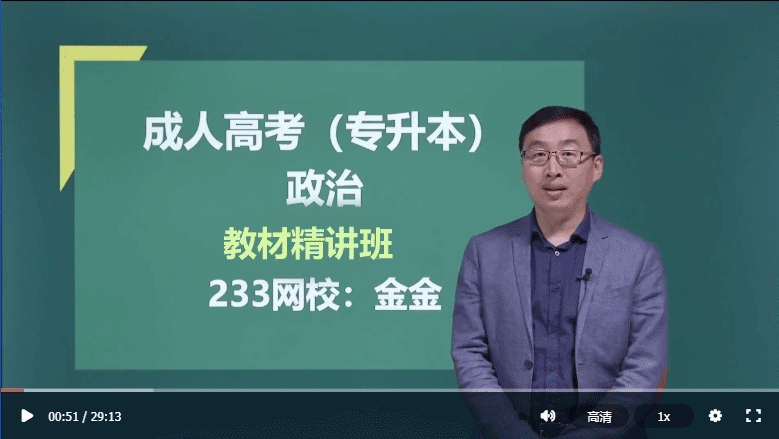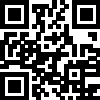2014хЙДцфККщЋшфИхцЌшБшЏцЈЁцшЏщЂхчцЁфИ
ууPassage Three
ууOn the morning of November 18,1755, an earthquake shook Boston, Massachusetts. John Winthrop, a professor at Harvard College, felt the quake and awoke. тI rose,т Winthrop wrote, тand lighting a candle, looked on my watch, and found it was 15 minutes after four.т John Winthrop went downstairs to the grandfather clock. It had stopped four minutes before, at 4:11. Except for stopping the clock, the quake had only thrown a key from the mantel (хЃчхА) to the floor.
ууThe clock had stopped because Winthrop had put some long glass tubes he was using for an experiment into the case for care. The quake had knocked the tubes over and blocked the pendulum (щц). Winthrop, therefore, had the exact time that the earthquake had hit Boston. He looked at the key on the floor. The quake had thrown it forward in the direction of the quakeтs motion (шПхЈ) by a shock coming from the northwest, perhaps in Canada.
уу71. The text proves that _______.
ууthe power of nature is terrible
ууearthquakes happen most often during nighttime hours
ууthe direction of an earthquake can be discovered
ууuniversities study the cause of earthquakes
уу72. The text suggests that _________.
ууA. Boston was badly destroyed B. earthquakes are common in Boston
ууC. John Winthrop had difficulty sleeping D. John Winthrop was a scientist
уу73. Which of the following is true?________.
ууSome tubes were broken into pieces and stopped the old clock
ууThe professor lit a candle because of power failure
ууBoston is in the southeast of Canada
ууThe shocks were slight in one way
уу74. The earthquake happened ________.
ууA. several minutes before the professor awoke B. and the professor awoke at 4:15
ууC. in the centre of Boston D. when John Winthrop felt it
уу75. Choose the right order according to the text.
ууa. The bed was shaking and John Winthrop awoke.
ууb. John Winthrop looked attentively at this watch.
ууc. John Winthrop got up to light a candle.
ууd. The earthquake happened in Boston in 1755.
ууe. John Winthrop knew the quakeтs direction.
ууf. John Winthrop knew the exact quakeтs time.
ууg. John Winthrop looked at the key on the floor.
ууA. g, d, e, a, c, b, f B. d, a, c, b, f, g, e C. a, e, d, c, b, f, g D. e, d, g, b, c, a, f
ууPassage Four
ууOceanography has been defined as тThe application of all sciences to the study of the seaт.
ууBefore the nineteenth century scientists with an interest in the sea were few and far between. Certainly Newton considered some theoretical aspects of it in his writings, but he was reluctant to go to sea to further his work.
ууFor most people the sea was remote, and with the exception of early intercontinental travelers or others who earned a living from the sea, there was little reason to ask many questions about it, let alone to ask what lay beneath the surface. The first time that the question тWhat is at the bottom of the oceans?т had to be answered with any commercial consequence was when the laying of a telegraph cable from Europe to America was proposed. The engineer had to know the depth profile (шЕЗфМхНЂчЖ) of the route to estimate the length of cable that had to be manufactured.
ууIt was to Maury of the US Navy that the Atlantic Telegraph Company turned, in 1853, for information on this matter. In the 1840s, Maury had been responsible for encouraging voyages during which soundings (цЕцАДцЗБ) were taken to investigate the depths of the North Atlantic and Pacific Oceans. Later, some of his findings aroused much popular interest in his book The Physical Geography of the Sea.
ууThe cable was laid, but not until 1866 was the connection made permanent and reliable. At the early attempts, the cable failed and when it was taken out for repairs it was found to be covered in living growths, a fact which defied contemporary scientific opinion that there was no life in deeper parts of the sea.
ууWithin a few years oceanography was under way. In 1872 Thomson led a scientific expedition (шхЏ), which lasted for four years and brought home thousands of samples from the sea. Their classification and analysis occupied scientists for years and led to five-volume report, the last volume being published in 1895.
уу76. The proposal to lay a telegraph cable from Europe to America made oceanographic studies take on ________.
ууA. an academic aspect B. a military aspect
ууC. a business aspect D. an international aspect
уу77. It was ________ that asked Maury for help in oceanographic studies.
ууA. the American Navy B. some early intercontinental travelers
ууC. those who earned a living from the sea
ууD. the company which proposed to lay an undersea cable
уу78. The aim of the voyages Maury was responsible for in the 1840s was _______.
ууto make some sounding experiments in the oceans
ууto collect samples of sea plants and animals
ууto estimate the length of cable that was needed
ууto measure the depths of the two oceans
уу79. тDefiedт in the 5th paragraph probably means т________т.
ууA. doubted B. gave proof to C. challenged D. agreed to
уу80. This passage is mainly about _______.
ууA. the beginnings of oceanography B. the laying of the first undersea cable
ууC. the investigation of ocean depths D. the early intercontinental communications
уут Є. Writing (20 points)
ууDirections:
ууFor this part, you are allowed 20 minutes to write a letter of about 80 words according to the following situation.
ууфН цЏHelenяМшІхфИхАфПЁчЛJulieяМхЏЙхЅЙххЅЙчфИхЄЋцЈцЅшЏЗфН хфН фИхЄЋхщЅшЁЈчЄКцшАЂяМшЁЈчЄКшІхшЏЗфЛфЛЌяМфЛЅчшАЂфЛфЛЌччц цЌОхО у
уушЎВхИшО хЏМяМ
ууфИКфКхИЎхЉшчх ЈщЂчГЛчЛчхЄшяМ233чНц ЁхМшЎОццшVIPчучВОшЎВчщхЏЙшшЏфИхщшІяМцфОЇщчЙухщЖцЎЕчхЏЙхІхшПшЁшО хЏМуццчЛхххЙДшшЏчЙчЙяМщЂцЕшшЏцЙхяМцЂГчхчЋ щшІшчЙяМхцшчЙхКщЂхНЂхМяМшЎВшЇЃчщЂцшЗЏяМфМ цхКшЏцхЗЇучЙхЛх шДЙшЏхЌ>>>
уу233чНц ЁчМшОцЈшяМ
уу2014хЙДцфККщЋшцЅхцЖщДхх ЅхЃ цЅхцЁфЛЖ шНцІччщцЉ хІфНшБшЏшшЏцЅх
ууххЙДчщЂхчцЁуфМАхуфИшНН шКцЏцІшЎК хЛхІчЛМх шЏцхЄфЙ фИщЂ хІфНшБшЏхЄфЙ /чщЂ
чИх ГцЈш
- 2017хЙДцфККщЋшфИхцЌшБшЏшшЏцЈЁцшЏщЂхчцЁфК03-22
- 2017хЙДцфККщЋшфИхцЌшБшЏшшЏцЈЁцшЏщЂхчцЁфИ03-22
- 2016хЙДцшфИхцЌшБшЏшххВхКшЏщЂхчцЁцБцЛ10-28
- 2016цшфИхцЌшБшЏхЄшшЏщЂхчцЁ14хЅ08-25
- 2016хЙДцфККщЋшфИхцЌшБшЏцЈЁцшЏщЂхчцЁ6хЅ08-04
| ПЮГЬзЈвЕУћГЦ | НВЪІ | дМл/гХЛнМл | УтЗбЬхбщ | БЈУћ |
|---|---|---|---|---|
| гяЮФ(ИпЦ№Еу)ОЋНВАр | ЕЫО§УФ | ЃЄ150 / ЃЄ150 |  |
БЈУћ |
| гЂгя(ИпЦ№Еу)ОЋНВАр | Monica | ЃЄ150 / ЃЄ150 |  |
БЈУћ |
| Ъ§бЇ(ЮФ)ОЋНВАр | ЭѕЗМ | ЃЄ150 / ЃЄ150 |  |
БЈУћ |
| Ъ§бЇ(Рэ)ОЋНВАр | ТогзжЅ | ЃЄ150 / ЃЄ150 |  |
БЈУћ |
| ДѓбЇгяЮФ(зЈЩ§БО)ОЋНВАр | ХЗбєАиСи | ЃЄ150 / ЃЄ150 |  |
БЈУћ |
| гЂгя(зЈЩ§БО)ОЋНВАр | Monica | ЃЄ150 / ЃЄ150 |  |
БЈУћ |
| ИпЕШЪ§бЇ(вЛ)(зЈЩ§БО)ОЋНВАр | ЭѕЬЮ | ЃЄ150 / ЃЄ150 |  |
БЈУћ |
| ИпЕШЪ§бЇ(Жў)(зЈЩ§БО)ОЋНВАр | ТогзжЅ | ЃЄ150 / ЃЄ150 |  |
БЈУћ |
ИЈЕМПЮГЬ
- ИпЦ№Еу-Ъ§бЇ(ЮФЪЗВЦОРр)

- ЭѕЗМРЯЪІ
 УтЗбЪдЬ§
УтЗбЪдЬ§
- ИпЦ№Еу-гЂгя

- MonicaРЯЪІ
 УтЗбЪдЬ§
УтЗбЪдЬ§
- зЈЩ§БО-ДѓбЇгяЮФ

- ХЗбєАиСиРЯЪІ
 УтЗбЪдЬ§
УтЗбЪдЬ§
АрМЖНщЩм
ЬзВЭАќКЌЃКзЈЩ§БОVIPАр/ИпЦ№ЕуVIPАрЃЈКЌОЋНВ+ецЬтНтЮі+ФЃПМЕуЬт)
ЬзВЭгХЪЦЃК1ЁЂЫјЖЈКЫаФПМЕу
2ЁЂПМЧАЗЂЗХ2ЬзЪдЬт
3ЁЂУтЗбжибЇвЛДЮБЃеЯ
ХфЬзЗўЮёЃК1ЁЂУтЗбЬтПт
2ЁЂПЮГЬНВвх+ПЮМўЯТди+вЦЖЏПЮЬУ







 УтЗбЪдЬ§
УтЗбЪдЬ§ 




